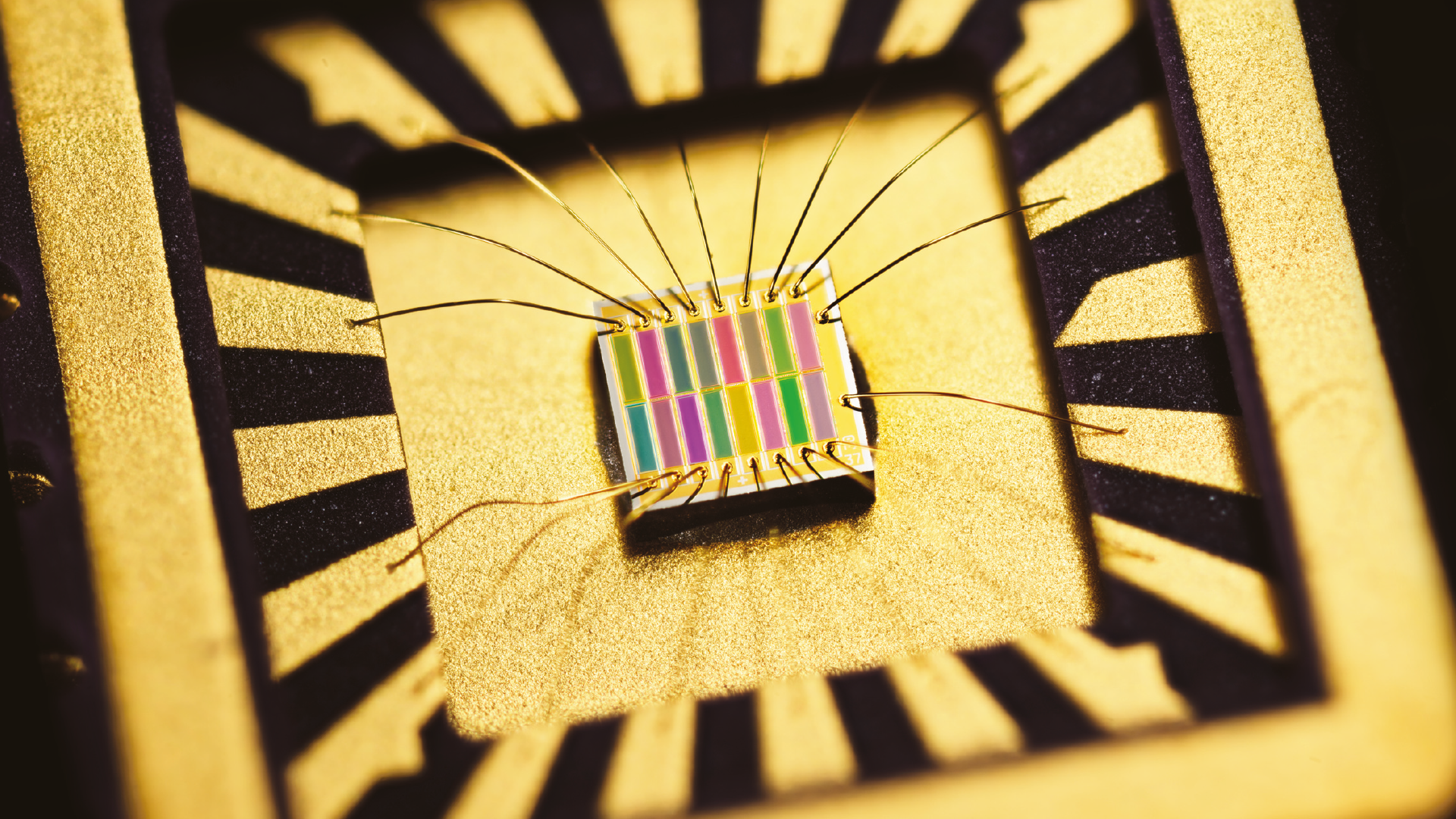Spectral sensing

Making the invisible visible
The human eye is an amazing sensor. Three photoreceptor cells convert visible light into signals for different colors. Our brain turns these into color impressions that provide information: a red strawberry is ripe, a green one isn’t.
But there’s also light that our eyes can’t see, such as the reflection of near-infrared light. This type of light’s reflection is what provides the most useful information about the chemical composition of food, drugs or other organic materials.
The tiny near-infrared sensor you see here enables us to ‘see’ invisible light and convert it into useful information. The sensor fits on a mini chip and can be used anywhere, any time. For example, it can be used to ‘see’ whether tomatoes are ripe for picking, or for optimizing the plastic waste sorting process. The possibilities are endless!
Ons menselijk oog is een wonderbaarlijke sensor. Drie fotoreceptor cellen zetten zichtbaar licht om in signalen voor verschillende kleuren. Onze hersenen maken daar een kleurindruk van die ons informatie geeft: een rode aardbei is rijp, een groene niet.
Er is ook licht dat onze ogen niet kunnen zien, zoals nabij-infrarood. De reflectie van dat licht geeft informatie over de chemische samenstelling van voedsel, geneesmiddelen of andere organische materialen.
De kleine nabij-infraroodsensor die je hier ziet maakt het ‘zien’ van on zichtbaar licht en de omzetting daarvan in bruikbare informatie mogelijk. De sensor past op een mini-chip en kan overal en op elk moment worden gebruikt. Zo ‘zie’ je bijvoorbeeld of tomaten rijp zijn om te plukken, of kun je het sorteerproces van plastic afval optimaliseren. De mogelijk heden zijn eindeloos voor tal van sectoren en industrieën.
| Contact | Andrea Fiore |
|---|---|
| a.fiore@tue.nl | |
| Project owner | Andrea Fiore |
| Department | Applied Physics, Eindhoven Hendrik Casimir Institute |
| Website | More information |
| Partner | MantiSpectra B.V. |